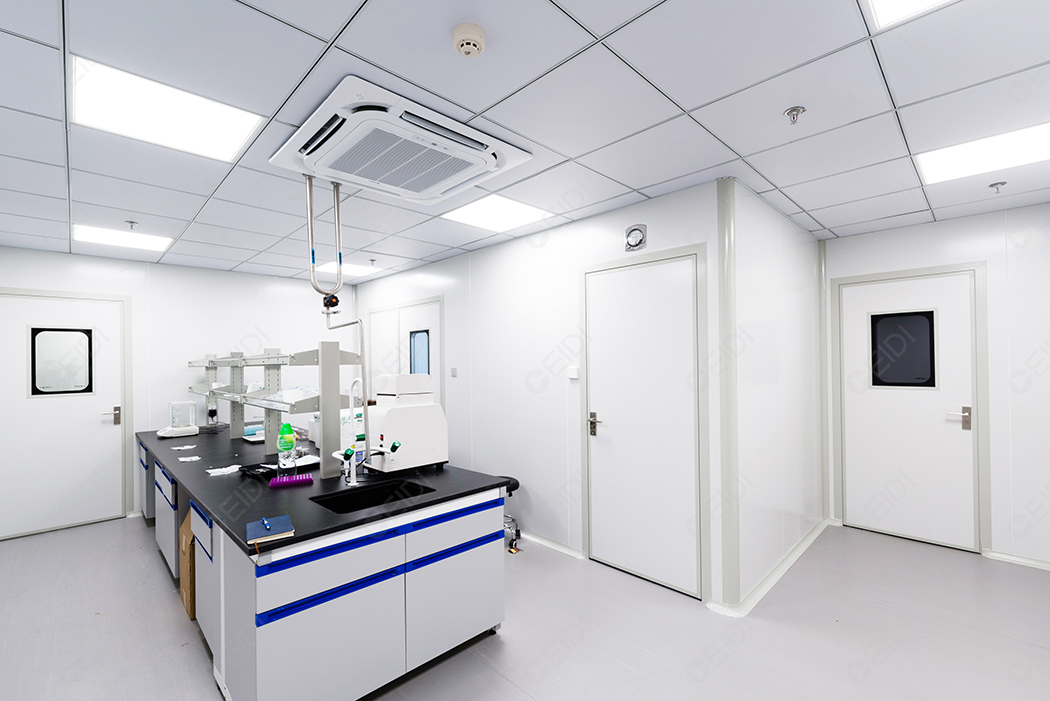Welcome to the official website of Xidi laboratory, the laboratory design and decoration recognize Xidi!
|
|
Home >> News >> Technology
文章出处:Technology|阅读量:885|发表时间:2020-07-27
For laboratory design, two aspects of design are crucial, namely: ventilation system design and clean air conditioning system design. Below, I will share with you the knowledge about ventilation and clean air-conditioning systems in laboratory design.
I. Laboratory ventilation system design
In the design of the ventilation system in the laboratory design, three points need to be paid attention to, namely: the number of air changes, the form of air supply and exhaust, and the room pressure difference.
1. Air change frequency: Generally speaking, the minimum air change rate in the laboratory is 6 times/h-8 times/h. The overall air change frequency is determined by the total air volume discharged from local exhaust equipment or other rooms. The cooling air volume required to take away the heat load of the room and the minimum number of air changes are required to determine the air volume.
2. Air supply and exhaust mode: The air supply and exhaust mode in the laboratory should be determined according to the actual situation. When the indoor exhaust air volume is large, it is recommended to equip an outdoor fresh air supply system and include the fresh air load. Note that all exhaust devices should share an exhaust system. If the laboratory needs to use the exhaust system continuously, it is recommended to equip the air supply system.
3. Room pressure difference: The design of room pressure difference in the laboratory should also be determined according to the actual situation. Generally speaking, unless the cleanliness requirements of the laboratory are high, the relative negative pressure should be maintained
II. Design of laboratory clean air-conditioning system
For the air conditioning system design in the laboratory design, 4 points need to be paid attention to, namely: differential pressure control, fresh air volume calculation, air supply volume calculation, and refrigeration room design.
1. Differential pressure control: Specifically, the differential pressure control must comply with 2 standard standards-Article 48 of "Pharmaceutical Production Quality Management Practice (Revised in 2010)" (2011 New GMP), GB50457-2008 "Clean Factory for Pharmaceutical Industry" Article 3.2.4 of the Design Code.
2. Calculation of fresh air volume: Only when three parameters are determined, can the fresh air volume be accurately calculated. The first is to compensate for the sum of the indoor exhaust air volume and the fresh air volume required to maintain the positive pressure in the room, the second is the fresh air volume per person in the room should not be less than 40m³/h, and the third is the fresh air volume to be taken to maintain the positive pressure The sum of air volume and compensation indoor exhaust air volume.
3. Air supply calculation: It needs to be calculated according to the number of air changes, and the number of air changes is different for different cleanliness levels. In addition, several rooms with high heat and humidity load can be selected in the calculation, and the air volume of the room can be calculated according to the heat and humidity load value.
4. Refrigeration room design: The design in this area must be determined according to the above three items, only in this way can the laboratory clean air conditioning system design be truly done.